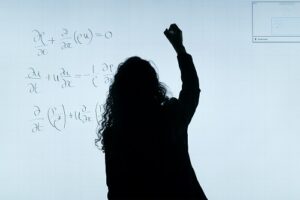什么是Camera Calibration?
几何相机校准,也称为相机切除,估计图像或视频相机的镜头和图像传感器的参数。您可以使用这些参数来校正镜头失真、以世界单位测量对象的大小或确定场景中相机的位置。这些任务用于机器视觉等应用中,以检测和测量物体。它们还用于机器人技术、导航系统和 3-D 场景重建。
什么是OpenCV?
OpenCV 代表开源计算机视觉。简单地说,它是一个用于图像处理的库。事实上,它是一个巨大的开源库,用于计算机视觉应用、人工智能或机器学习算法驱动的领域,以及完成需要图像处理的任务。因此,它在当今系统的实时操作中具有重要意义。使用 OpenCV,可以处理图像和视频以识别物体、面部,甚至是人类的笔迹。
OpenCV 最初由英特尔开发,后来得到 Willow Garage 和 Itseez 的支持,后来又被英特尔收购。第一个 OpenCV 版本是 1.0。这个跨平台库在 BSD 许可下发布,在开源 Apache 2 许可下可免费用于学术和商业用途。它具有 C++、C、Python、Java 和 MATLAB(一种提供良好数值计算环境的专有多范式编程语言)接口,这些接口的 API 可以在在线文档中找到。OpenCV 还支持 Windows、Linux、Mac OS、iOS 和 Android。最初,创建 OpenCV 的主要目的是提高计算效率的实时应用程序。自 2011 年以来,OpenCV 还为实时操作提供 GPU 加速。在与其他库(例如 NumPy)集成后,Python 可以处理 OpenCV 数组结构进行分析。识别图像模式及其几个特征需要使用向量空间并对这些特征进行数学运算。
OpenCV的应用
有许多应用程序依赖于使用开源计算机视觉库:
人脸检测/人脸识别/人脸识别系统
面部识别系统是一种可以将数字图像或视频帧中的人脸与人脸数据库进行匹配的技术。它用于通过身份验证服务对用户进行身份验证,并通过从给定图像中精确定位和测量面部特征来工作。
自我运动估计
自我运动是指相机在环境中的 3D 运动。在计算机视觉的背景下,自我运动涉及估计相机相对于刚性场景的运动。自我运动估计的一个例子是估计汽车相对于道路上的线条或从汽车本身看到的街道标志的移动位置。自我运动的估计在自主机器人导航应用中很重要。
手势识别
作为计算机视觉的一个子学科,手势识别旨在通过数学算法解释人类手势。手势可以源自任何身体运动或状态,但通常源自面部或手部。
人机交互 (HCI)
人机交互(HCI)是计算机技术设计和使用的研究领域,它详细研究人(用户)与计算机之间的接口。HCI 研究人员专注于人类与计算机交互的方式和设计技术,使人类能够以新颖的方式与计算机交互。
移动机器人
移动机器人是可以在周围环境中移动的机器人。因此,移动机器人技术是机器人技术和信息工程的一个子领域。
物体检测
对象检测是与计算机视觉和图像处理相关的计算机技术,专注于识别数字图像和视频中某一类(如人类、建筑物或汽车)的语义对象的实例。
运动结构 (SFM)
运动结构 (SFM) 是一种摄影测量距离成像技术,用于从可与局部运动信号结合的二维图像序列中估计三维结构。它在计算机视觉和视觉感知领域进行研究。
运动追踪
也称为视频跟踪,运动跟踪是使用相机随时间定位移动对象(或多个对象)的过程。
增强现实 (AR) 增强现实 (AR) 基本上是一种真实世界环境的交互式体验,其中现实世界中的对象通过计算机生成的感知信息得到增强,通常跨越多个感官,无论是视觉、听觉、触觉、体感和嗅觉。

下面是一个OpenCV的计算机代写案例:
Review questions
Answer the following questions. Make sure that your answers are concise. In questions requiring explanations, make sure your explanations are brief.
- Camera calibration 1
(a) Given the projection equation p = MP explain the problems of: forward projection, calibration, and reconstruction. Which problem is the easiest? Which is the most difficult?
(b) Explain what is the necessary input for camera calibration.
(c) Explain the steps in the non-coplanar calibration algorithm.
(d) Given a known projection matrix with rows (1)2)3)4)(1)0)3)4)(1〉1〉111) and a world point Pi = (1,2)3) what are the 2D image coordinates of Pi after projecting it. Make sure to convert Pi to homogeneous coordinates before projecting it.
(e) Given the corresponding world-image points: — (100, 200) write the first two lines of
the matrix that needs to be formed for solving for the unknown projection matrix M.
(f) What is the minimal number of points that is necessary to be able to find a unique solution for M. How is the solution obtained?
(g) Explain the principal that is used to extract the unknown camera parameters from the projection matrix M.
(h) Explain how to compute the quality of the projection matrix M estimate.
(i) Explain the principal of planar camera calibration. How does planar camera calibration differ from non-coplanar one?
(j) Explain the difference between the homography (2D projective map) H and the projection matrix M. What is the assumption that is used to make sure we deal with homography matrices?
- Camera calibration 2
(a) Given a pair of corresponding image and world points (1)2) (3, 4)5) respectively, write the first two rows of the matrix that has to be constructed to solve for the unknown coefficients of the projection matrix.
(b) Given the estimated projection matrix M with rows (2)3)4,5)> and (3)4)5)6), findthe camera parameters UQ and VQ (coordinates of principal point) of the camera.
(c) Given a pair of corresponding image and world points (1)2) ⑶ 4)5) respectively, and estimated projection matrix M)with rows (1,2)3)4))(2)3)4,5,and 3)4)5)6))Find the projection error of the matrix M.
(d) After performing calibration, let the obtained rotation of the world with respect to the camera be given by / + Q where 7 is a 4×4 identity matrix and Q is a 4×4 matrix having in its (0)0) element the number 5 and zeros elsewhere. Let the obtained translation of the world with respect to the camera be given by the vector (1)2)3). Compute the rotation and translation of the camera with respect to the world.
(e) Given a pair of corresponding image and world points (1)2) ⑶ 4,0) respectively, that are used for planar calibration, write the first two rows of the matrix that has to be constructed to solve for the unknown coefficients of the homography matrix.
- Multiple view geometry 1
(a) Explain the difference between sparse and dense stereo matching. What are the advantages/disadvantage of each approach?
(b) Explain how normalized cross correlation (NCC) and sum of square distances (SSD) can be used for point matching. What is the isk in allowing the search space to be the entire image? How can the search space be reduced to a line?
(c) Given an axis aligned stereo pair with corresponding points (100, 200) and (103,200) in the left and right images respectively, compute the depth (z-coordinate) of the 3D point that produced this projection. Assume that the focal length of both cameras is 10. that the baseline is 100, and that we are working in camera coordinates.
(d) Explain the ambiguity problem in stereo matching.
(e) Given R』and Rr ^ Tr (rotation and translation of left/right cameras with respect to world)? Write the expression for the rotation and translation of the right camera with respect to the left camera.
- Multiple view geometry 2
(a) Given an axis aligned stereo system with focal length of 10mm)and baseline 20mmi compute the depth of a point with disparity of 30mm.
(b) Let A and B be the vectors (2)3,4), respectively. Write the matrix that if multiplied by B will result in the cross product AxB
(c) Let F be a fundamental matrix with rows (1,2,3), (2,3,4), (3,4,5). Let (1,2) and (2, 3) be corresponding left and right points. Compute the value of Fpi.
(d) Given corresponding left and right points (1)2)⑵ 3), respectively, write the respective row the in the matrix that has to be formed to solve for the fundamental matrix.









